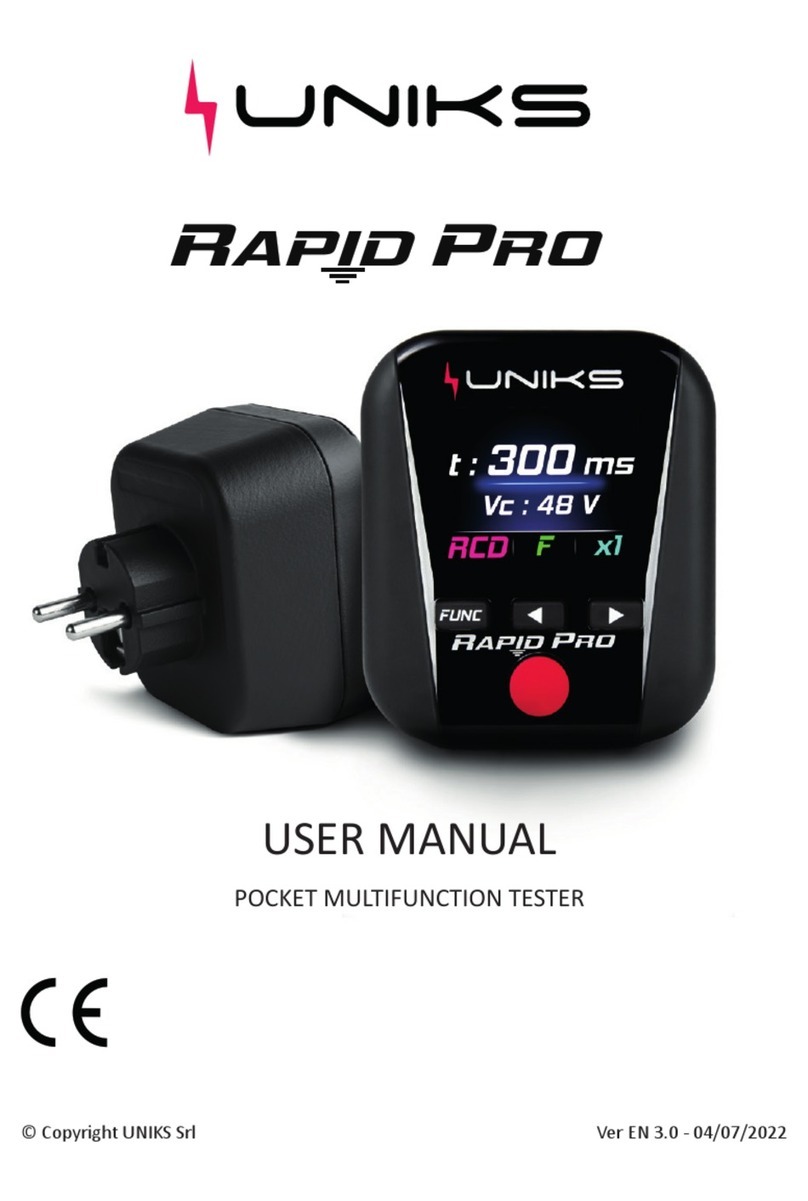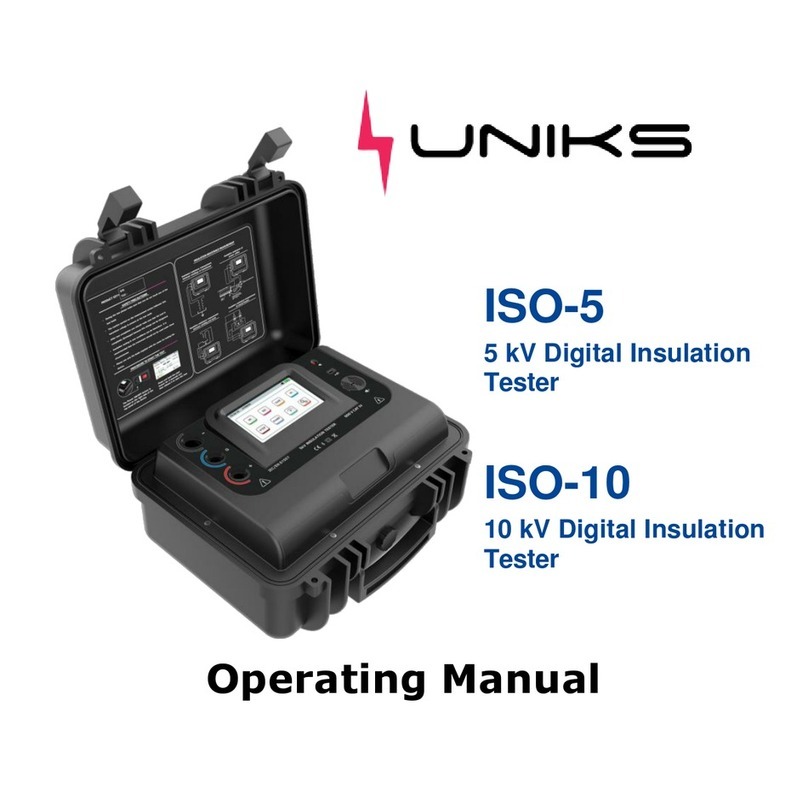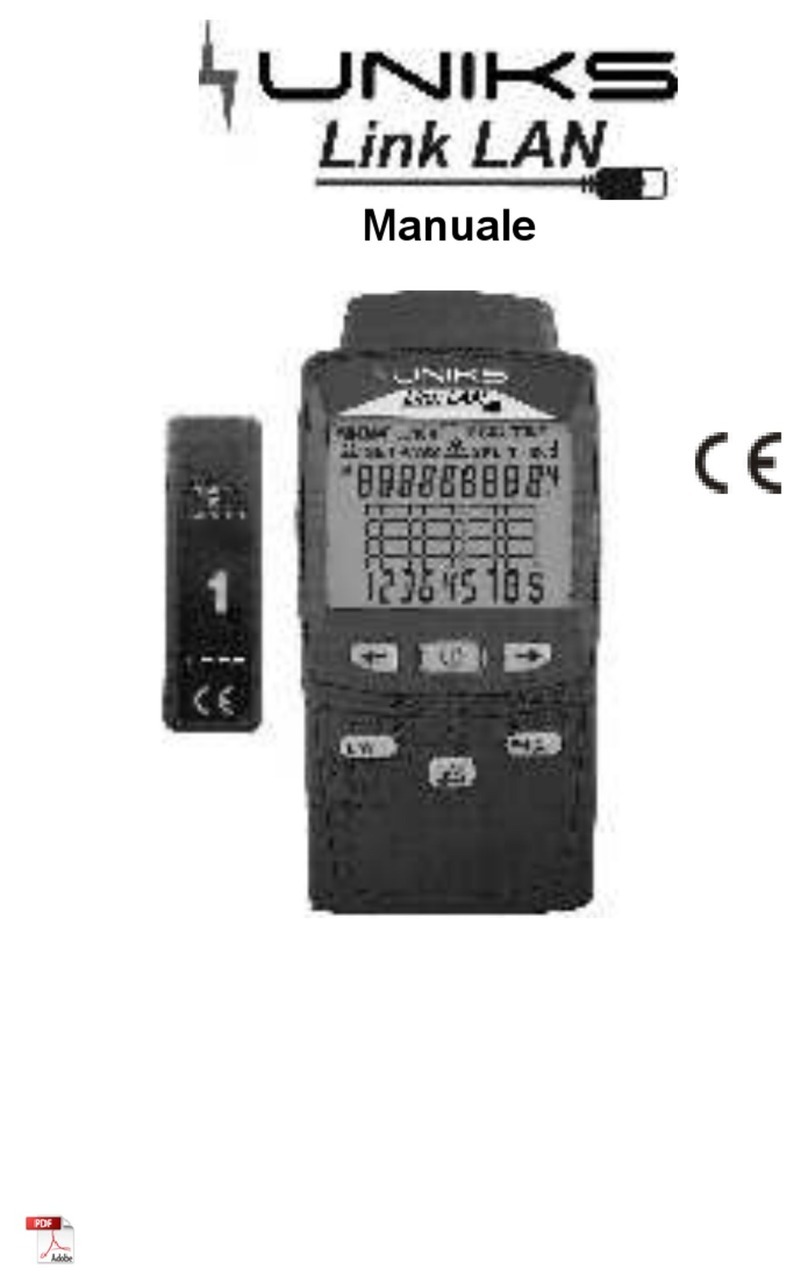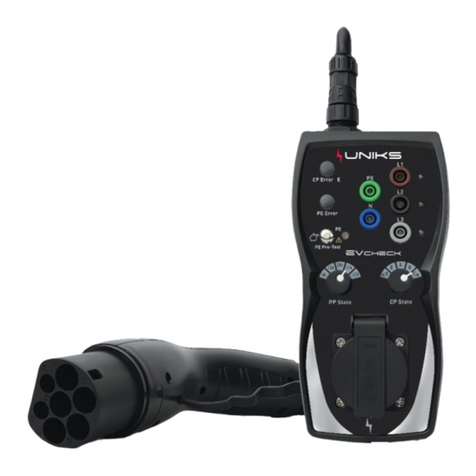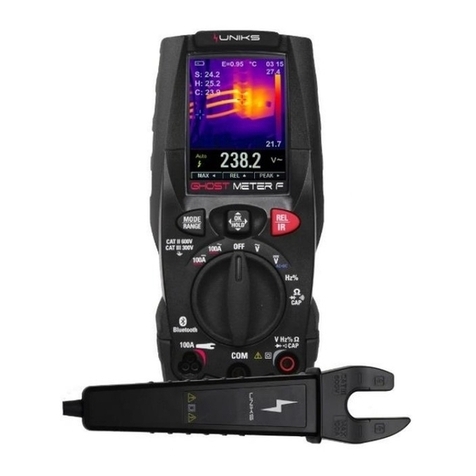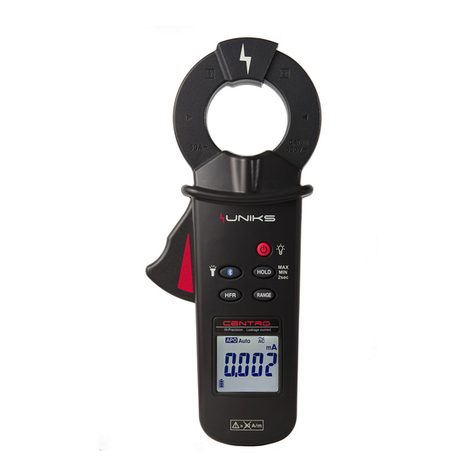USER MANUAL M80
9
•Test di continuità: Intervallo di rilevamento 0... 500 kΩ + 50%
•Misurazione della resistenza : 0-1999Ω ± (5% + 10dgt); Risoluzione: 1Ω
•Batteria: 3V (IEC LR03 1,5V x 2)
•Temperatura: -5... Funzionamento a 40°C; -20... Conservazione a 70°C, nessuna
condensa
•Umidità: Max 85% RH
•Altitudine fino a 2000m
•Sovratensione CAT. III 1000V/CAT. IV 600 V
•Standard EN61243-3:2014
•Grado di inquinamento 2
•Protezione: IP 64
10. Pulizia e conservazione
Il tester non ha bisogno di alcuna manutenzione speciale se utilizzato secondo il manuale
d'uso.
Rimuovere il tester da tutti i punti di prova prima della pulizia.
Utilizzare un panno leggermente umido con detergente neutro per la pulizia dello
strumento. Non utilizzare abrasivi o solventi.
Non esporre lo strumento alla luce diretta del sole, alle alte temperature e all'umidità o alla
rugiada.
Rimuovere le batterie quando lo strumento non sarà in uso per un lungo periodo.
11. Consigli sulla sicurezza
•A seconda dell'impedenza interna del rilevatore di tensione ci sarà una diversa
capacità di indicare la presenza o l'assenza di tensione operativa in caso di
presenza di tensione di interferenza.
•Un rilevatore ditensione di impedenza interna relativamente bassa, rispetto al valore
di riferimento di 100 kΩ, non indicherà tutte le tensioni di interferenza con un valore
di tensione originale superiore al livello ELV. Quando è in contatto con le parti da
testare, il rilevatore di tensione può scaricare temporaneamente la tensione di
interferenza a un livello inferiore all'ELV, ma tornerà al valore originale quando il
rilevatore di tensione viene rimosso.
•Quando l'indicazione "tensione presente" non appare, si consiglia vivamente di
installare apparecchiature di messa a terra prima del lavoro.
•Un rivelatore di tensione di impedenza interna relativamente elevata, rispetto al
valore di riferimento di 100 kΩ, potrebbe non permettere di indicare chiaramente
l'assenza di tensione operativa in caso di presenza di tensione di interferenza.
•Quando l'indicazione "tensione presente" appare su una parte che si prevede
venga scollegata dall'impianto, si raccomanda vivamente di confermare con un
altro mezzo (ad esempio l'uso di un rilevatore di tensione adeguato, il controllo
visivo del punto di disconnessione del circuito elettrico, ecc.) che non vi è tensione
di esercizio sulla parte da testare e di concludere che la tensione indicata dal
rilevatore di tensione è una tensione di interferenza.
•Un rilevatore di tensione che dichiara due valori di impedenza interna ha superato
un test di prestazioni di gestione delle tensioni di interferenza ed è (entro limiti tecnici)
in grado di distinguere la tensione operativa dalla tensione di interferenza e ha un
mezzo per indicare direttamente o indirettamente quale tipo di tensione è presente.













